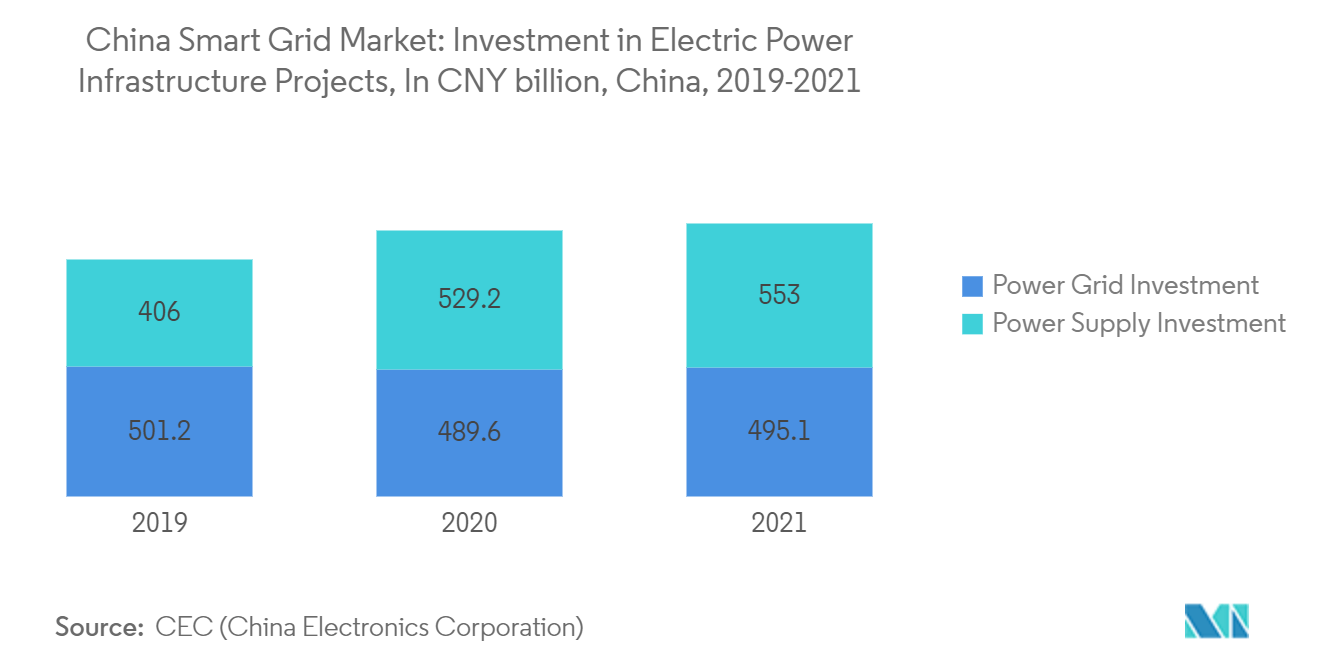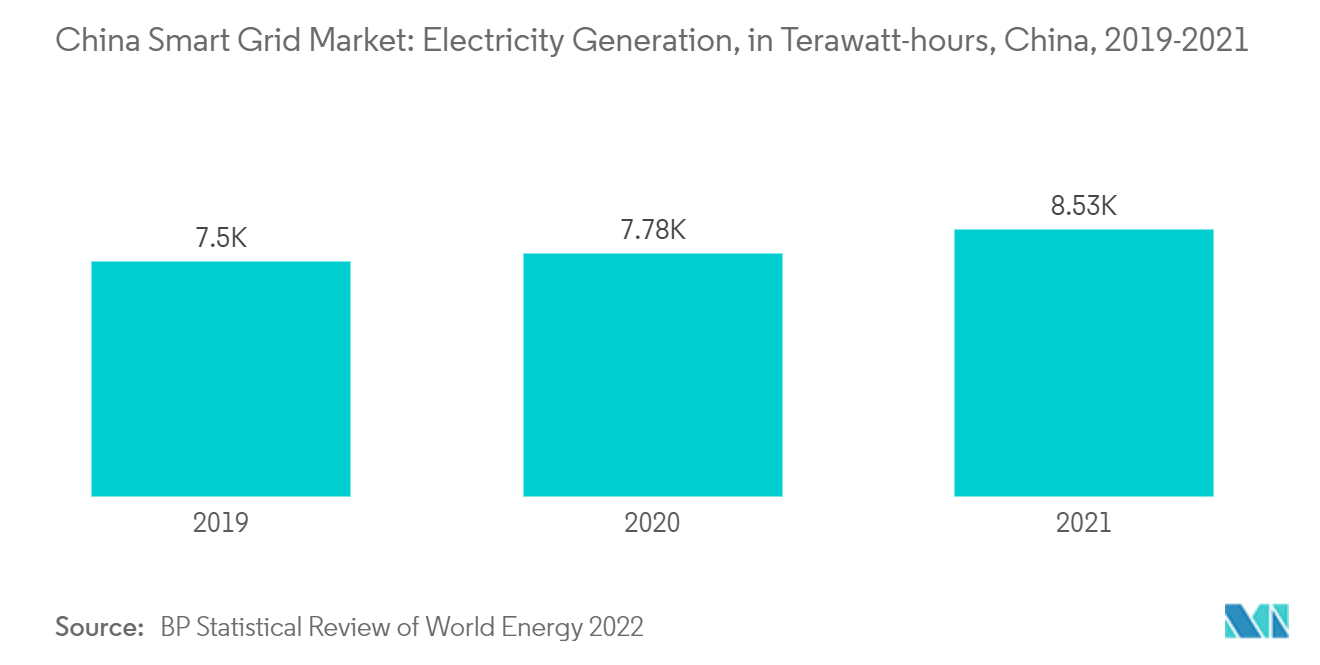Market Trends of China Smart Grid Network Industry
Increasing Investment Plans and Upcoming Smart Grid Projects Driving the Market Demand
- China is the world's largest market for power transmission and distribution (T&D) and is also poised to become a significant consumer of smart grid technology, supported by its policy to reduce carbon emissions and commitment to green development.
- According to the National Energy Administration (NEA), the total power use in China was approximately 8.31 trillion kilowatt-hours (kWh) in 2021. Specifically, the power consumed by the primary, secondary, and tertiary industries climbed 16.4%, 9.1%, and 17.8% year-on-year, respectively.
- According to the State Grid Corporation of China (SGCC), the largest state-owned utility corporation, China's energy demand is expected to exceed 10 Petawatt hours (PWh) in 2030, representing a considerable challenge to power transmission that the country needs to address. The transmission network growth is parallel to the power generation growth to develop the infrastructure and support the high-power generation.
- Also, State Grid Corporation of China has rolled out the 'Global Energy Internet' concept, based on having smart grid connections to an ultra-high voltage power grid that would potentially deliver clean energy. This, in turn, is expected to drive the smart grid network market in the country during the forecast period.
- According to China Electronics Corporation (CEC), in 2021, the total investments in the electric power grid and supply projects reached more than CNY 1,048 billion in China, an increase from around CNY 1,018 billion in 2020.
- Thus, with the investments in the electricity infrastructure, the demand for smart grid networks is expected to increase in China during the forecast period.

Substation Automation Holds the Major Market Share
- Substations are one of the most critical parts of an electrical energy system with many costly equipment and operations. These substations are increasingly being used with smart automation techniques instead of manual data processing, leading to fast and accurate operation of the resulting automated system and guarantees a reliable electricity network and feedback data.
- Further, the smart grid system constitutes a fully automated monitoring and controlling system designed for generation, transmission, and distribution substations to track the situation of equipment and unexpected faults. The advanced platform digitizes various manual operations into a single resilient structure. It works based on a mature SCADA platform and several subsidiary objects like Industrial Ethernet Switch to fully operate a substation.
- The digitalization of substation provides various benefits such as improving overall substation management process, facilitation monitoring, and protection processes maximizing failure prevention by fast and precise monitoring, optimizing substation operational performance, and access to substations from the control center and web application.
- Moreover, according to China Electricity Council, the smart grid's accumulated investment is expected to reach CNY 4 trillion. Chinese companies have gained UHV transmission and smart substations experiences over the years, encouraging China's ambition to become a world leader in electrical power equipment by 2025.
- Besides, the Chinese private companies are signing an agreement with foreign players for building a bunch of advanced innovation-driven smart grid projects, including smart substations, automation, smart EV charging and battery swapping networks, smart power consumption information collection system, and multi-terminal VSC-HVDC.
- In 2021, the total primary energy consumed was 157.65 exajoules, a rise of 7.1% compared to 2020. Further, the power infrastructure propelled significantly, with an electricity generation of 8534.3 TWh in 2021, witnessing an 8% increase from 2020.
- Therefore, with the rise of electricity demand and increasing emphasis on clean energy, leading to new-generation projects and the refurbishment of outdated transmission systems in China, the demand for substation automation is expected to increase in the coming years.


